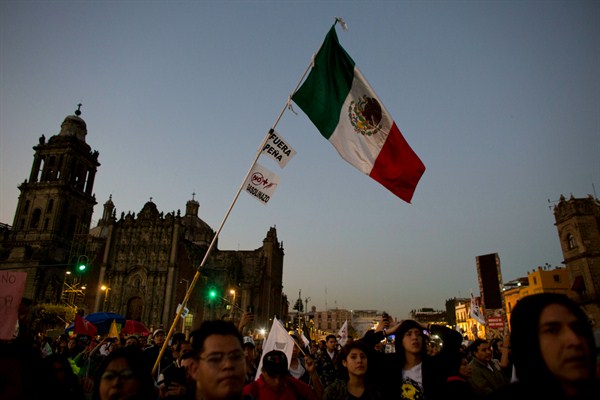A perfect storm is gathering in Mexico as the dawn of Donald Trump’s presidency north of the border coincides with domestic upheaval. While Trump’s threats on trade, immigration and border security have received the most attention, Mexico’s deeply unpopular president, Enrique Pena Nieto, also faces social unrest and a potential recession ahead of a presidential election in 2018—one in which, much as in the U.S., a populist underdog will look to capitalize on public anger.
Since Jan. 1, headlines from Mexico have been dominated not by Trump, but by the so-called “gasolinazo,” a controversial yet inevitable decision by the Pena Nieto administration to lift subsidies on gasoline prices in a bid to lighten the tax burden on debt-ridden state energy giant Pemex. The measure, implemented on New Year’s Day, sparked a price increase of 20.1 percent and widespread fuel shortages. Yet the public response has been fiercer than the government likely expected. Raucous demonstrations and sporadic violence and looting stretched from Tijuana, where U.S. authorities temporarily closed the San Ysidro border crossing Jan. 7, to the border with Guatemala. During the first week of January, rioters looted some 250 retail outlets, leading to 600 arrests and the death of a police officer.
The protests undoubtedly reflect a wider malaise. The one-two punch of Trump and low oil prices have seen the value of the peso plunge over the past year. Throughout the U.S. presidential race, the currency rose and fell according to Trump’s chances and hit a record low of 22.04 per dollar last week amid his threats of a “major border tax.” While Mexico has been trying to wean itself off its dependence on oil, which over the past decade supplied up to a third of the federal budget, low prices have forced substantial public spending cuts. Inflation is expected to rise by 4.6 percent in 2017, while the World Bank has revised its growth predictions for Mexico this year from 2.8 to 1.8 percent.

